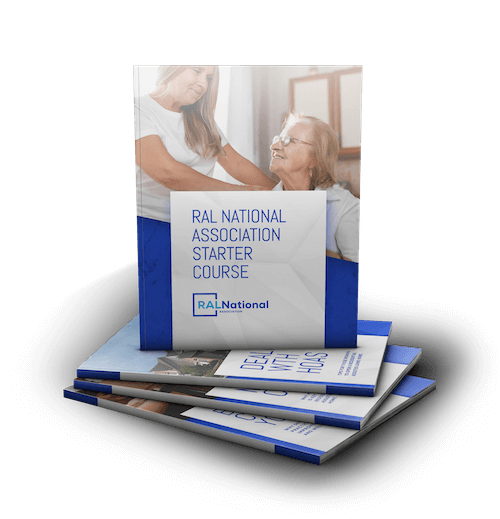“According to the National Alliance for Caregiving, the value of unpaid care for approximately 65 million at-home caregivers is estimated to be worth $375 billion.”
November is National Family Caregivers Month, but the support caregivers need continues 365 days a year. There are countless adult children that provide care to their aging parents while raising their own children and pursuing career goals. They seek to selflessly bring comfort, social engagement, and stability to those they love. How has being a caregiver affected your life? Residential Assisted Living National Association provides ongoing information and support for caregivers who take on this difficult work. In addition to learning strategies to stay physically and emotionally strong, here’s some need-to-know information adult children should be aware of when caring for mom and dad.
10 FACTS AT-HOME CAREGIVERS SHOULD KNOW
1. Caregiving Is Costly
According to the National Alliance for Caregiving, nearly half of working caregivers report that caregiving expenses have depleted most — or even all — of their savings.
2. Options Are Available
If caring for your loved one at home creates challenges, Residential Assisted Living National Association can help with this process. In addition to gaining needed support, many caregivers go on to start their own assisted living home. You can reserve a space for mom and dad, as well as earn additional cash flow.
3. Knowledge Makes Caregiving Easier
A National Alliance for Caregiving survey found that 44 percent say that reading books about caregiving and visiting supportive websites is helpful. They agree that this approach helps them manage frustration and gives them a sense of community.
4. At-Home Caregivers are America’s Leading Long-Term Care Providers
Did you know that at-home caregivers are the leaders of long-term care in America? According to the National Academy of Medicine, these caregivers provide a staggering 90 percent of care. This is also why residential assisted living is the fastest growing industry because it gives caregivers an opportunity to make money in the process.
5. You Are Not Alone
According to the National Alliance for Caregiving, More than 65 million Americans care for their aging or disabled loved ones on an annual basis.
6. You Can Take a Break
Respite care and adult daycare provide ways committed caregivers can take a break. Respite care is short term care, it extends from hours to weeks, which is provided at various senior living communities. Sometimes respite care can be provided in the home. Adult daycare is a similar option that allows caregivers the chance to recharge on a daily basis, while their family members are in a safe environment.
7. You Have Limits
Everybody eventually reaches their limit. When you realize that your loved one needs professional care, there are options that can benefit them socially and you financially.
8. Finding Support
When a loved one experiences dementia or Alzheimer’s disease, providing care can become far more complicated. There are many caregiver support groups across the country. The Alzheimer’s Association offers peer and professional support groups for caregivers dealing with the disease. Local hospitals generally provide caregiver support groups that are not focused on memory loss. There are also various online caregiver support groups.
9. Your Work Is Valuable
According to the National Alliance for Caregiving, the value of unpaid care for approximately 65 million at-home caregivers is estimated to be worth $375 billion.
10. Caring for Yourself First Must Be Your Priority
The only way to provide the best quality care for your loved one is to keep yourself healthy and happy. Caring for yourself means you must recognize your own limits. You must be able to express your feelings, avoid guilt and depression, receive affection, and protect your individuality. These self-care goals require an intentional effort.
STAYING STRONG YOURSELF
Good health is a priceless present for you to give your loved one. When caregivers are rundown, tired, and stressed out quality care declines. Depression affects decision making just like the flu impacts your ability to provide quality care. If you are not well, who will fill your shoes, whether temporarily or permanently? These are the kind of questions that at-home caregivers must consider. Caregivers must pay attention to physical and emotional symptoms that can affect their own health and well-being. This will help guard against caregiver burnout. Otherwise, mental stress and physical exhaustion will reduce your ability to ward off unwanted illnesses.
PROFESSIONAL TIPS FOR SELF-CARE
It is important to create a balance between caring for others and caring for yourself. The following techniques will help you with your wellness journey of self-care.
- Take a daily vitamin supplement.
- Exercise regularly — make it a priority for both your mental and physical well-being.
- Schedule routine check-ups and do not ignore the possible symptoms of ill health.
- Take a break from caregiving – respite time is necessary.
- Get an annual flu shot.
- Watch for signs of depression.
- Laugh with a friend











